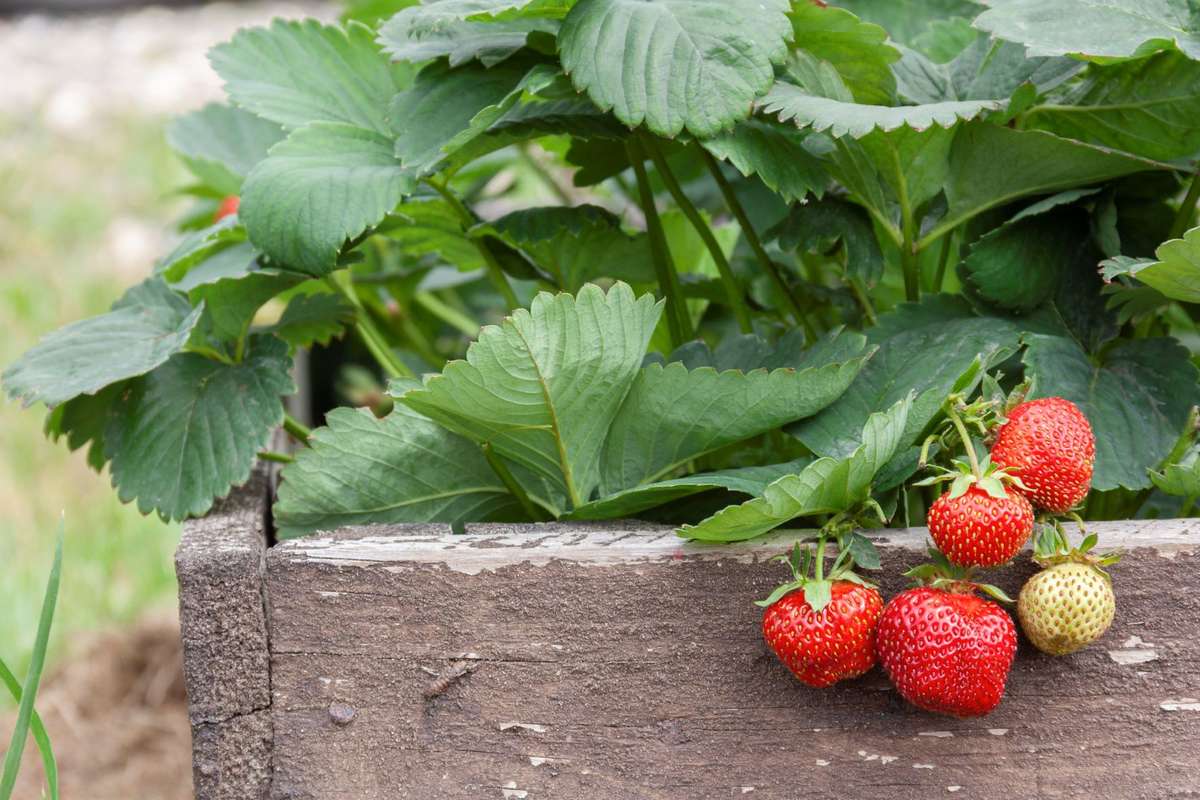
Strawberries

Berry, Berry Delicious
Strawberries are delicious, very easy to grow, and a great plant for beginners and kids. Read on for information about some of the varieties we offer at the nursery, along with tips about planting and growing these crowd-pleasing edibles.
About Strawberries
Strawberry plants like the sun and require 6-10 hours a day of sunlight. These low-growing herbaceous plants are made up of a fibrous root system and a crown which produces basal leaves (leaves that grow lowest on the stem of a plant). The leaves are compound, with three leaflets that have serrated edges and small amounts of fuzz. The flowers are typically white, produced in small clusters on slender stalks. As the strawberry plant matures, the root system becomes woody, and the crown sends out runners that touch ground and root again to grow the plant.
Plant Types
- June-bearing varieties bear fruit at one time, usually over a period of several weeks.
- Everbearing varieties provide a large crop during the spring, then a small summer crop, followed by another large crop in late summer or fall.
- Day-Neutral varieties provide fruit throughout the growing season, until the first frost.
Strawberry Varieties
- Albion: Day-Neutral. Uniform, firm fruits that have high sugar content. Good for desserts! Resistant to verticillium wilt, phytophthora rot, anthracnose rot. Good heat tolerance. Trim runners for best production.
- Chandler: June-bearing. Can be an early producer. Good flavor. Resistant to leaf spot.
- Eversweet: Everbearing. Bred for southeastern climate. Sweet flavor. Disease resistant and high yield. Good for freezing and growing in hanging baskets.
- Ft. Laramie: Everbearing/Day-Neutral. High yield, large firm fruits. One of the most cold hardy varieties. Generally good disease resistance.
- Monterey: Everbearing/slightly Day-Neutral. Firm large fruits with great flavor. California variety with good heat tolerance. Susceptible to powdery mildew but good resistance to leaf diseases.
- Quinault: Everbearing. Large, sweet fruits. Good for hanging planters because it produces berries on runners that are not yet rooted. Good disease resistance.
- Seascape: Day-Neutral. High yield of medium-large fruits with great flavor. California variety. Good in warm climates and resistant to many viral diseases, but susceptible to leaf spot.
- Sequoia: June-bearing. May produce into fall if summer is mild. Very large sweet fruits. Resistant to leaf spot and cold hardy. Will produce early if winter frost is mild.
Planting Tips
- Strawberries need to stretch their legs! Plant starts about 1½ feet apart to leave room for runners and allow about four feet between rows.
- Strawberries prefer a rich, dark soil that drains well, but are fairly tolerant of different soil types. If your soil is a challenge, we recommend amending before planting with E.B. Stone™ Organics Soil Booster or GreenAll™ Firmulch™ Soil Conditioner.
- Recommended soil pH is between 5.5 and 7. If you have alkaline soil, you can also grow strawberries in containers or raised beds to better control the soil environment.
- When planting, be sure the hole is large enough to accommodate the entire root system, but do not plant too deep. The roots should be covered, but the crown should be right at the soil surface. Do not bury the crown, or it could rot. Allow the leaves, flowers, and fruit to be exposed to good sunlight and fresh air.
Growing Tips
- Add mulch around your strawberry plants to keep moisture in and reduce weeds.
- Since strawberries have shallow roots, watering is very important, and plants will require regular water to flourish, especially when fruiting and with warm temperatures.
- Feed your strawberry plant with an organic fertilizer like E.B. Stone™ Organics Citrus & Fruit Tree Food.
- In the first year, it is recommended that you remove blossoms to discourage fruiting. The plant will then put energy into developing healthy roots and you will see a more robust plant in the second year and fruit yields will be higher.

